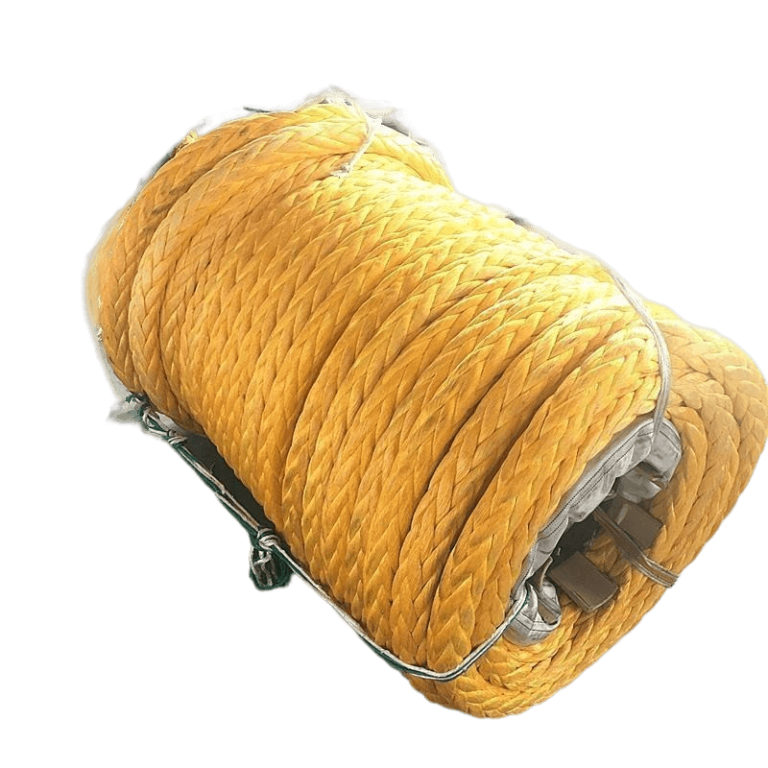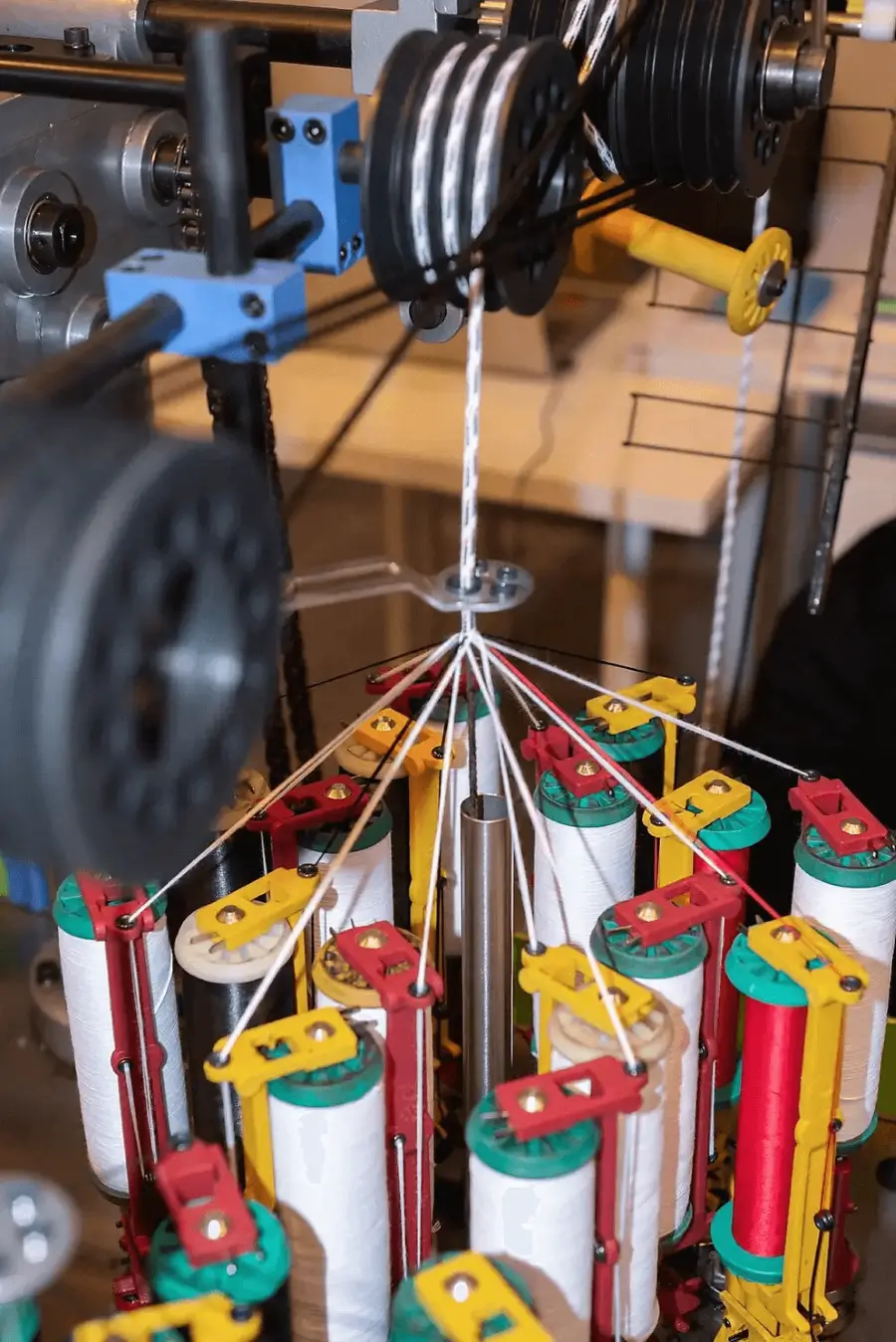marine anchor rope

MARINE ANCHOR ROPE
Duracordix’s marine anchor ropes are made from nylon fiber with polyester jacket and designed to provide reliable and durable anchoring solutions for your boating and fishing needs.
- High strength for heavy towing.
- Excellent shock absorption for rough seas.
- UV resistant for longer lifespan.
Table Of Contents For This Page
To ensure easy access to the information you need, we’ve created this table of contents that will take you directly to the relevant section when clicked
- customer's favourite
Hot Selling sizes
Top Picks: Most Popular Sizes of Our Marine Anchor Line Selection

3/8" (10mm)
ideal for small boats, kayaks, and personal watercraft. Offers excellent shock absorption and abrasion resistance for reliable anchoring.

5/8" (16mm)
ideal for larger boats and heavy-duty applications, delivering exceptional strength, reliability, and resistance to wear, UV rays, and chemicals

7/8" (22mm)
ideal for commercial vessels, marine construction, and other demanding situations that need superior strength and durability.
Duracordix is a marine anchor rope & dock line manufacturer & Supplier in China.
we can produce various sizes for different applications and custom made for special projects.
No matter you’re looking for a wholesale supplier or custom made anchor rope or dock line, we can all help. contact Duracordix now.
- sizes available
SPECIFICATION
Diving Deep: Essential Specifications of Our Marine Anchor Rope.
| Dia.(mm) | Cir(inch) | Ktex(g/m) | Breaking(kn) |
|---|---|---|---|
| 16 | 2 | 164 | 59 |
| 20 | 2-1/2 | 255 | 92 |
| 22 | 2-3/4 | 309 | 111 |
| 24 | 3 | 368 | 127 |
| 28 | 3-1/2 | 501 | 172 |
| 32 | 4 | 654 | 225 |
| 36 | 4-1/2 | 828 | 285 |
| 40 | 5 | 1018 | 352 |
| 44 | 5-1/2 | 1236 | 420 |
| 48 | 6 | 1473 | 500 |
| 52 | 6-1/2 | 1730 | 600 |
| 56 | 7 | 2009 | 690 |
| 60 | 7-1/2 | 2297 | 780 |
| 64 | 8 | 2616 | 900 |
| 72 | 9 | 3306 | 1090 |
| 80 | 10 | 4089 | 1344 |
| 88 | 11 | 4954 | 1626 |
| 96 | 12 | 5892 | 1950 |
| 104 | 13 | 6911 | 2320 |
| 112 | 14 | 8024 | 2670 |
| 120 | 15 | 9198 | 3050 |
Noted: based on double braided anchor rope and other sizes are available upon request.
- main features
Advantages OF Advantages OF MARINE ANCHOR Line
Discover the Advantages of Duracordix Anchor Line!
Superior Elasticity
Our nylon anchor rope provides excellent shock absorption, allowing for smoother anchoring by mitigating sudden force spikes during turbulent waters.
Durability
Crafted with precision, our marine rope resists UV rays, saltwater, and abrasion, ensuring longevity and reduced wear and tear in marine environments.
Weight Balance
Capitalizing on nylon's unique properties, our anchor rope delivers an unparalleled strength-to-weight ratio, providing safety without the added bulk.
Anti-Twist Design
Our marine anchor rope is meticulously engineered to prevent kinks and twists, facilitating effortless deployment and ensuring stress-free retrieval operations.
- Happy Clients
What They Said
Trusted Voices: Why Mariners Choose Our Marine Anchor Rope.
I highly recommend Duracordix's anchor rope for its strength, durability, and resistance to moisture and UV rays. It's the perfect rope for my boating needs.
Sarah BrownI've used Duracordix's anchor rope for years and have never been disappointed. It's a high-quality rope that provides excellent value for its price.
Lisa RodriguezDuracordix's nylon anchor rope is my go-to choice for all boating needs. It's reliable, durable, and provides excellent shock absorption. I highly recommend it
David Lee- Pain-Free Purchase
WHY CHOOSE
Duracordix anchor Rope
- Unyielding Performance: Duracordix anchor rope reduces fraying by 90%. Exceptional tensile strength ensures zero breaks, providing worry-free anchoring every time.
- Elemental Resilience: Experience 30% longer lifespan. Our rope combats saltwater and UV damage, significantly outlasting standard marine ropes in harsh conditions.
- User-Friendly Handling: With a 40% smoother texture, Duracordix rope ensures easier handling and deployment. Streamlined for user convenience, making anchoring swift and efficient.
- Low Maintenance Marvel: Spend 60% less time on upkeep. Our durable nylon rope reduces frequent maintenance, letting you focus on sailing.
- Maritime Adaptability: Suitable for 15+ marine conditions and vessels. Duracordix ensures you have the optimal rope for any anchoring situation.
- Cost-effective: Duracordix offers premium quality with 20% savings. Get top-notch marine rope without stretching your budget, ensuring unmatched value.
Related products
Maximize your Duracordix winch rope experience with top-quality related products
Durable ropes designed for securing vessels, resisting marine elements, ensuring stability during docking.

Lightweight, synthetic connector; safer alternative to metal; versatile with high strength-to-weight ratio.

Essential marine rope; resists saltwater, UV rays; offers strength, flexibility for sailing tasks.
FAQs
Clarifying Queries:Unveiling Key Answers on Our Nylon Marine Anchor Rope
What is marine anchor rope?
Marine anchor rope, also known as anchor line or rode, is a rope or chain that is used to anchor a vessel to the seabed.
What materials are used for marine anchor ropes?
Marine anchor ropes can be made from a variety of materials, including nylon, polyester, polypropylene, and chain.
What factors should be considered when choosing a marine anchor ropes?
Factors to consider when selecting an anchor rope include the size and weight of the vessel, the depth and type of seabed, and the prevailing weather conditions.
How do I maintain marine anchor lines?
Maintaining your marine anchor lines involve regular inspections for wear and tear, cleaning to remove dirt and salt buildup, and proper storage to prevent kinking or twisting.
What are the common types of marine anchor rope constructions?
Common types of marine anchor rope constructions include three-strand twisted rope, double-braid rope, and multi-strand rope.
How do I properly set and retrieve my anchor rope?
To set the anchor, slowly lower it to the bottom and let out enough rope so that the scope is at least 7-10:1. Back down on the rope until the anchor is firmly embedded in the seabed. To retrieve the anchor, slowly bring the vessel over the anchor while pulling the rope in.
How long should anchor rope be?
The length of the anchor rope should be at least 7-10 times the depth of the water in which you plan to anchor.
How to splice anchor rope?
Steps:
Prepare the Rope End:
- Measure approximately 2 feet from the end of the rope and mark it. This will be the bury point.
- Unwind the 12 strands slightly, just enough to work with, and tape or bind the individual strand ends to prevent fraying.
Form the Desired Loop:
- From the mark, bend the rope to create the desired loop size.
Begin the Bury:
- Using the fid or tube, open the rope at the marked bury point.
- Insert the tapered rope end into the fid.
- Push the fid through the center of the rope, ensuring you're not catching any strands. This will bury the end inside the rope.
Pull and Tighten:
- Once the fid comes out the other end, pull the rope's end through until the loop is at the desired size.
- Tighten the loop by milking the rope cover over the buried section from the loop end towards the tail end.
Lock Stitch (Optional but Recommended):
- Using a needle and whipping twine, sew several lock stitches across the throat of the splice (where the buried section starts).
- This will help secure the splice, especially when the rope is under load.
Trim and Finish:
- Cut off any excess tail close to the exit point from the bury.
- For synthetic ropes, you can melt the tip slightly to prevent fraying. Exercise caution to avoid damaging the rope.
How to attach anchor rope to chain?
To attach anchor rope to chain, use a shackle or other appropriate connection method.
What is the best material for anchor lines?
Nylon is the most popular material for anchor lines due to its strength, stretchability, and resistance to UV rays and abrasion.
how to choose nylon anchor rope?
1.Assess Strength Needs:
Consider equipment weight, maximum load capacity, and safety factors for suitable nylon rope strength.
2.Choose Rope Diameter:
Balance strength and handling by selecting a diameter based on specific requirements.
3.Evaluate Abrasion Resistance:
Pick a rope with high-quality braiding and coating for lasting durability in demanding applications.
4.Analyze Stretch/Elasticity:
Determine required stretch for anchoring or towing, and choose a rope that meets those needs.
5.Ensure UV/Chemical Resistance:
Select a rope with UV protection and chemical resistance for enhanced longevity and durability.
6.Review Packaging/Storage:
Duracordix ensures proper packaging and storage to prevent product damage during transit.
7.Prioritize After-sales Support:
Our dedicated service team addresses concerns and guarantees satisfaction with our products.
How often should I replace my marine anchor rope?
The frequency with which you should replace your marine anchor rope depends on a number of factors, including how often you use it, the conditions in which you use it, and the type of rope you have. As a general rule, you should replace your rope if it shows signs of wear or damage.
What is the difference between twisted and braided marine anchor ropes?
Twisted ropes are made by twisting multiple strands of fibers together, while braided ropes are made by weaving multiple strands together. Braided ropes are generally stronger and more durable than twisted ropes.
What is 3 strand synthetic anchor rope?
3 strand synthetic anchor rope is a type of rope construction that consists of three strands twisted together.
Can I use a regular rope as a marine anchor rope?
No, it's not recommended to use a regular rope as a marine anchor rope. Marine anchor ropes are designed specifically to withstand the harsh conditions of the marine environment and are typically made of materials that are resistant to salt, UV light, and abrasion.
What is the purpose of a swivel in a marine anchor rope?
A swivel in a marine anchor rope helps to prevent the rope from twisting or kinking, which can weaken the rope over time and cause it to break.
What is synthetic anchor rope vs chain?
Synthetic anchor rope is a rope made from synthetic materials, while chain is a metal chain used for anchoring. Synthetic anchor ropes are generally more flexible and lighter than chain but may not be as durable.
How often should I inspect my marine anchor rope?
It is recommended to inspect your marine anchor rope before each use and periodically throughout the boating season to ensure it is in good condition.




Your nylon anchor rope is the most reliable and durable rope I've used. It's easy to handle and performs exceptionally well in harsh marine conditions
John Smith